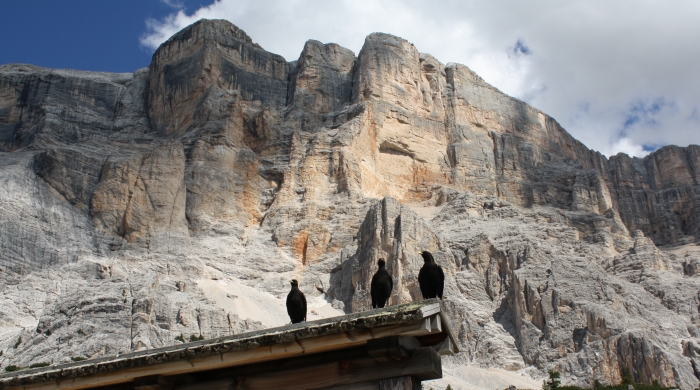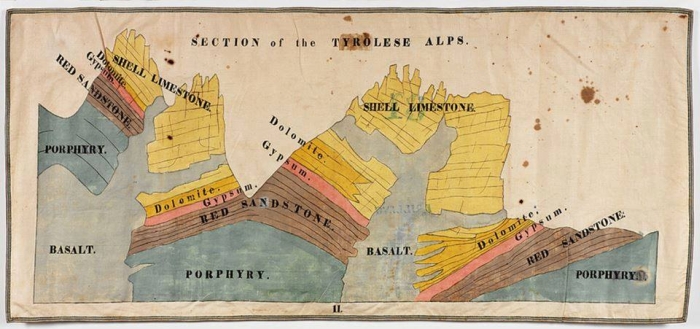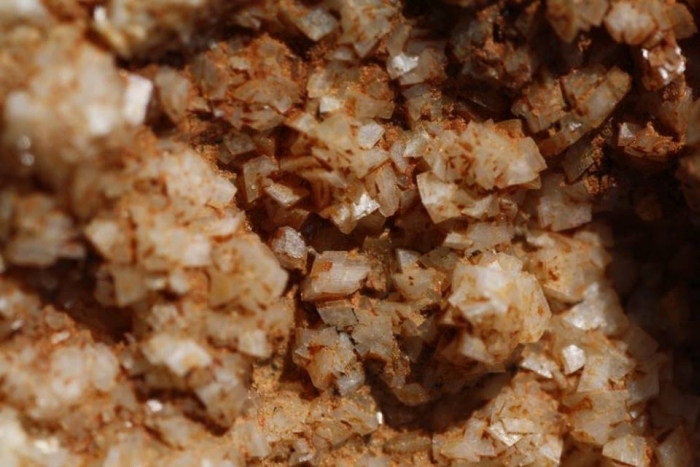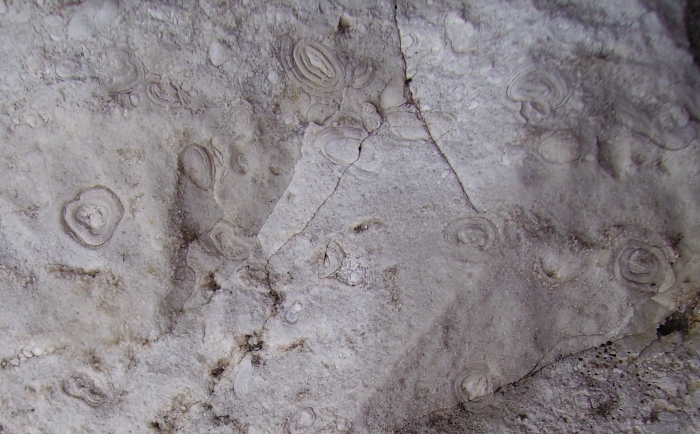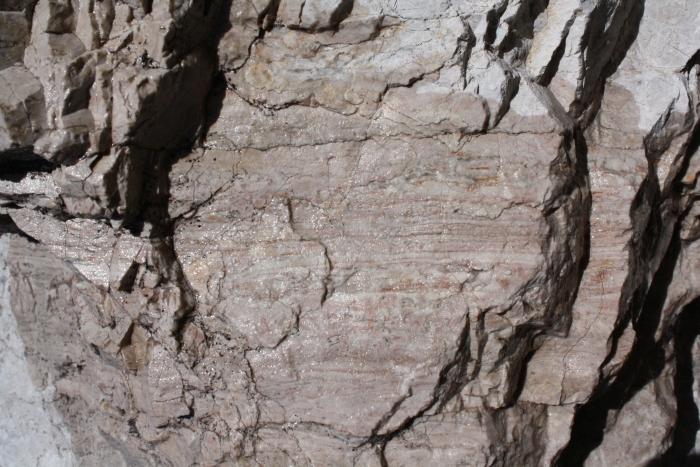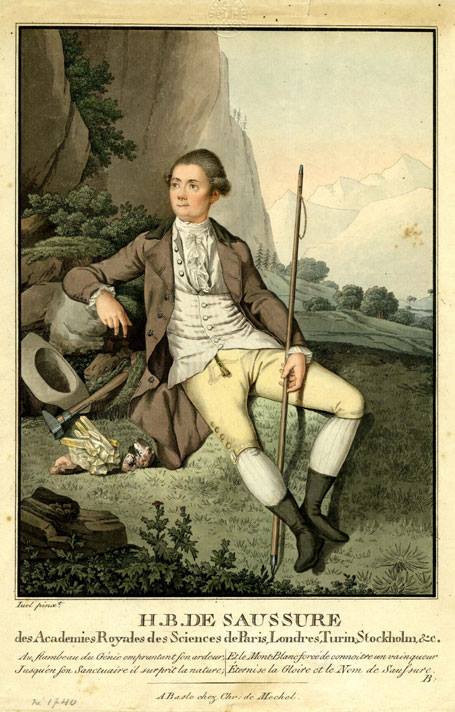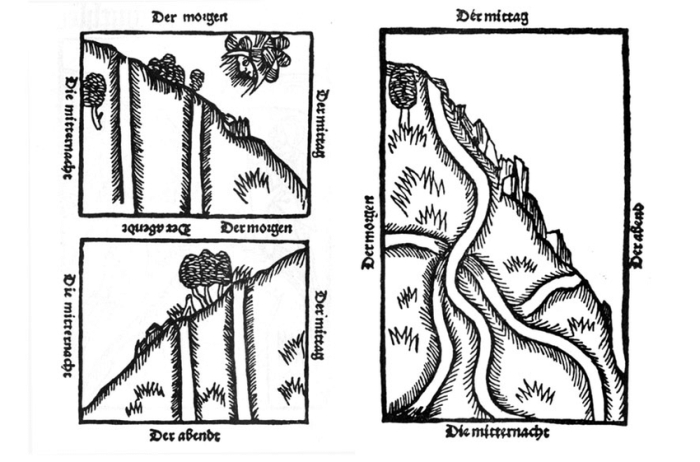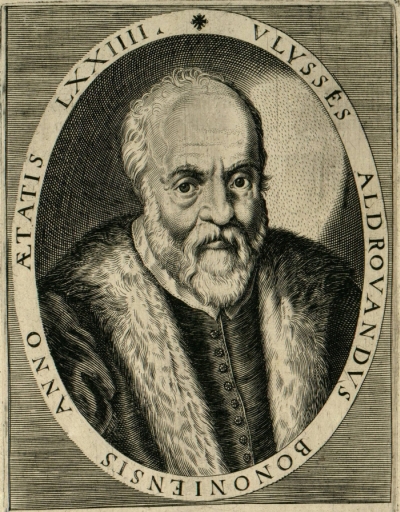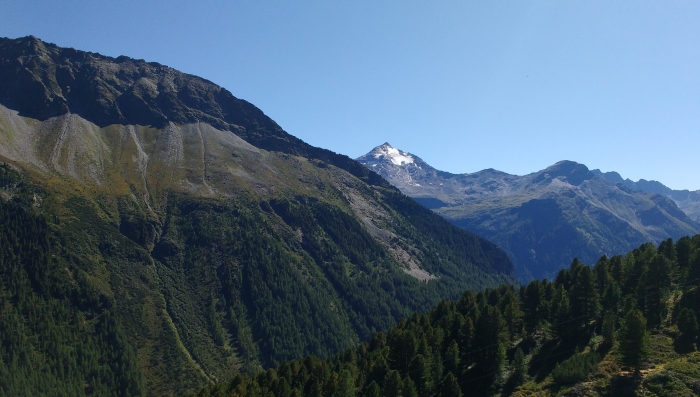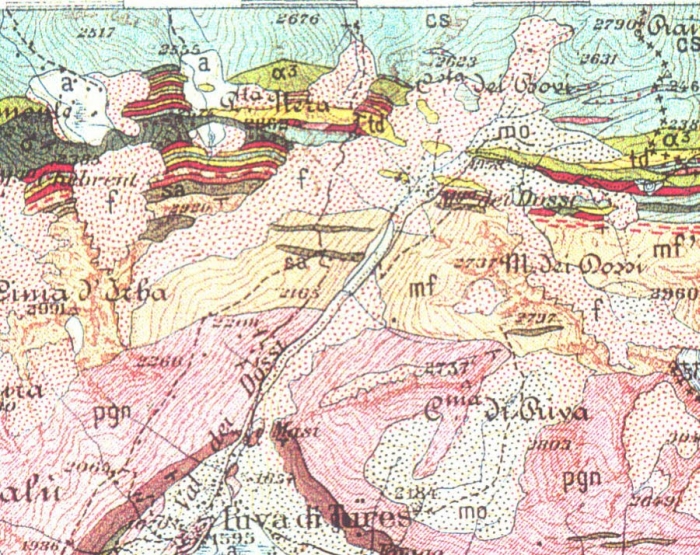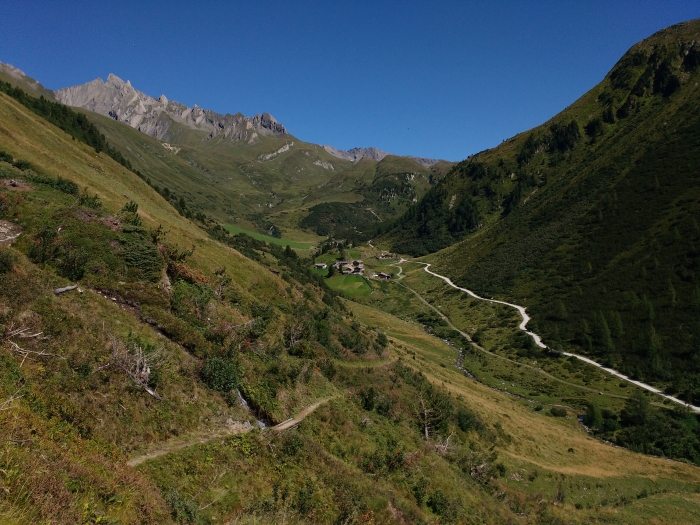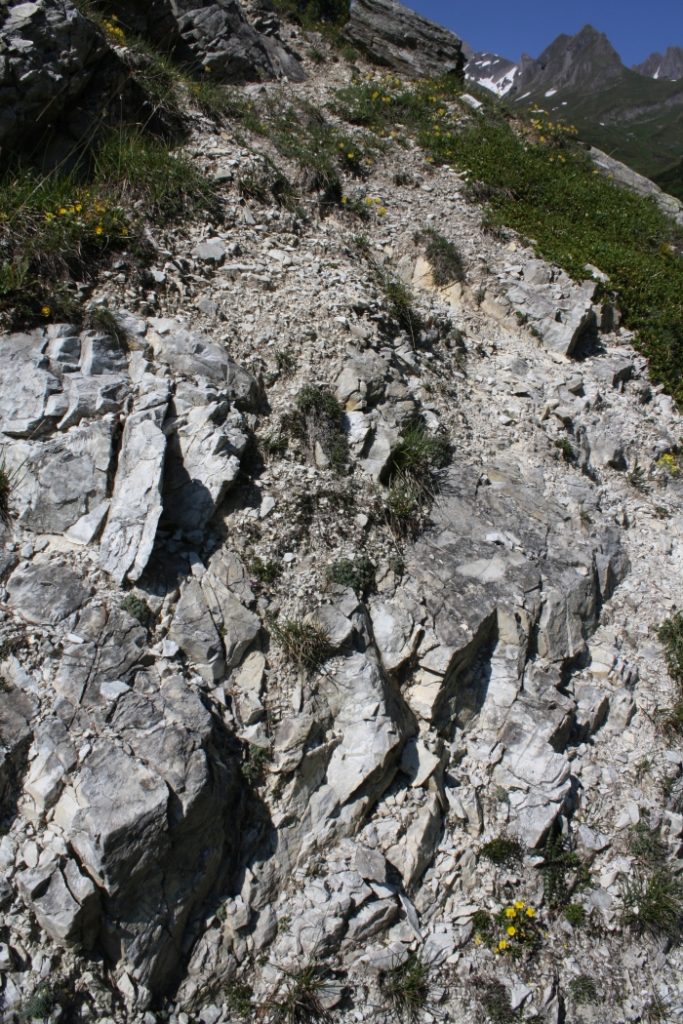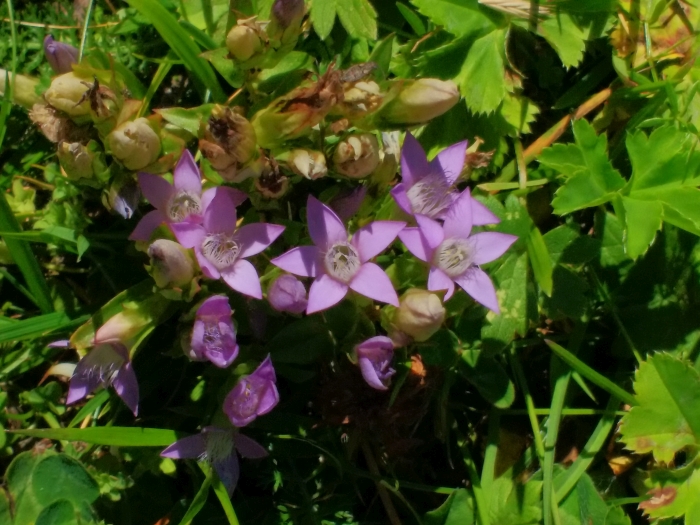Feldspars are by far the most common minerals, constituting nearly 60% of all terrestrial rocks. They are important in both magmatic (formed by crystallization from molten magma) and metamorphic rocks (formed by alteration of older rocks by heat and pressure over time). It’s only in sedimentary rocks that feldspars are relatively rare, as the crystals easily break (having a perfect cleavage) and tend to decay and erode in contact with water.
Feldspar is a name that comprises a series of aluminosilicate minerals with three end members: orthoclase (potassium feldspar K[AlSi3O8]), albite (sodium feldspar Na[AlSi3O8]) and anorthite (calcium feldspar CaAl2Si2O8). Albite and anorthite form a completely miscible series called plagioclase. Albite and orthoclase can form a complete miscible series at higher temperatures.
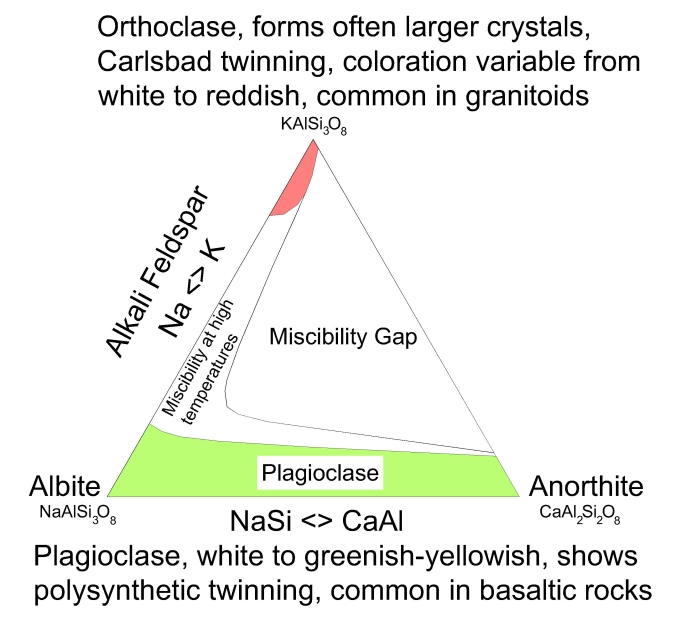
As there is miscibility between the various members of the feldspar group, exact feldspar identification in the field, without chemical analysis, can be difficult (to impossible).
Orthoclase is a common constituent of most granites and other felsic igneous rocks and often forms huge crystals and masses in pegmatite. Euhedral crystals are commonly elongate with a tabular appearance, colorless to white in appearance; however, traces of iron-oxides can cause greenish, greyish-yellow or reddish-pink coloration. Orthoclase often displays Carlsbad twinning and light is reflected differently by the crystal faces of the two intergrown crystals. Luster is vitreous to pearly.
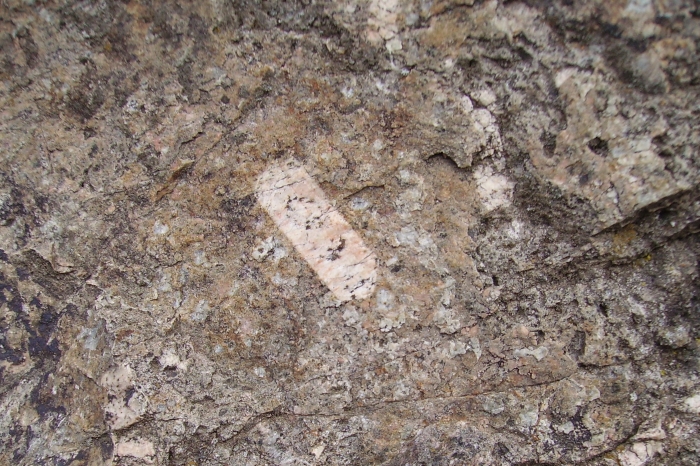
Plagioclase is the most important feldspar in basaltic magmatic rocks. On fresh surfaces colorless to whitish, on eroded surfaces often colored greenish-yellowish by traces of decomposing sericite, chlorite and epidote (however, reddish coloration by iron-oxides also possible). Virtually identical to orthoclase when fresh, shows less well developed twinning (polysynthetic twinning with lamellar crystals intergrowth, visibile only on microscopic scale) and generally forms smaller crystals. In granitoid rocks, plagioclase is composed mostly of albite (70 to 50%), in basaltic rocks (like diorite, gabbros and basalt), with an abundance of calcium, anorthite prevails with 60 to 90%.
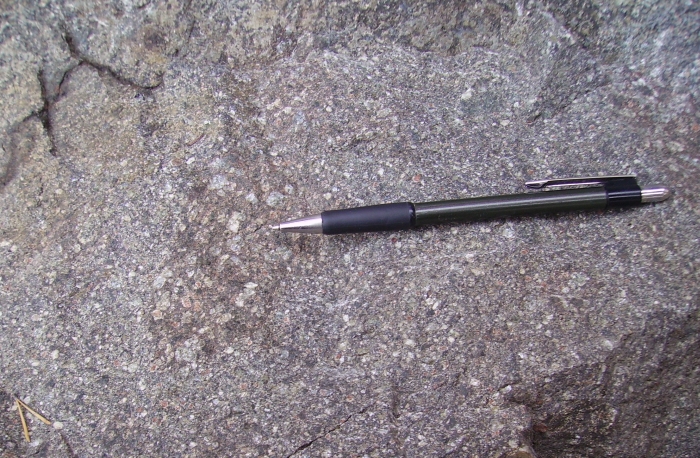
Feldspar has a relatively high mineral hardness of 6 after Mohs and can barely be scratched with the blade of a pocket knife or geological hammer. In metamorphic rocks, like orthogneiss (metamorphic granitoid rocks), it can form characteristic porphyroclasts, harder mineral grains surrounded by a groundmass of finer grained crystals, referred to colloquially as „Augen“ (=eyes).
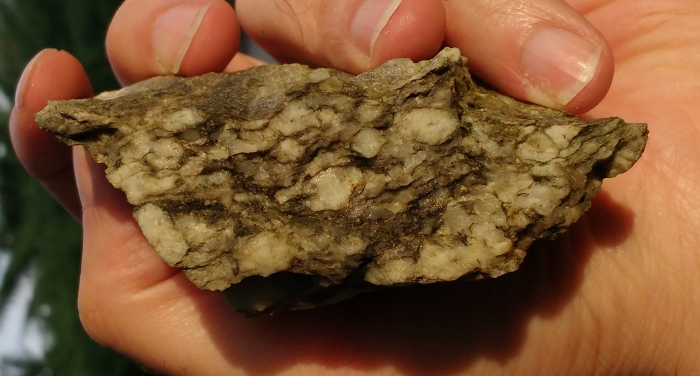
Weathered alkali-feldspar (orthoclase-albite series) will decay to white, crumbly argillaceous minerals, like kaolinite. Plagioclase decays to argillaceous minerals or fine-grained aggregates of colourless to grey sericite (mica variety).
Literature:
- AVANZINI et al. (2007): Erläuterungen zur Geologischen Karte von Italien Im Maßstab 1:50.000 Blatt 026 Eppan. APAT/Autonome Provinz Bozen Amt für Geologie und Baustoffprüfung
- MARETSCH, W.; SCHERTL, H.-P. & MEDENBACH, O. (2016): Gesteine – Systematik, Bestimmung, Entstehung. Schweizerbart Verlag: 368
- MEYER, J. (2017): Gesteine der Schweiz – Der Feldführer. Haupt Verlag: 444
- MEYER, J. (2017): Gesteine einfach bestimmen – Der Bestimmungsschlüssel. Haupt Verlag: 140
